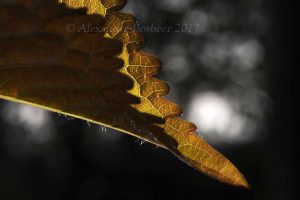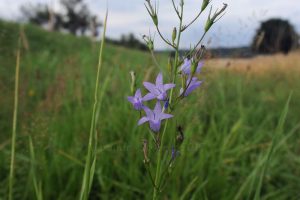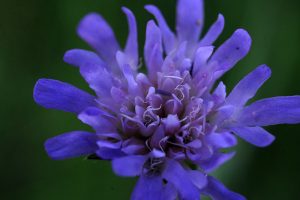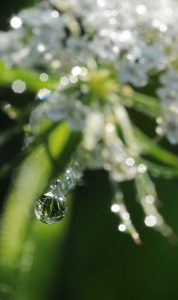Creating interesting macros
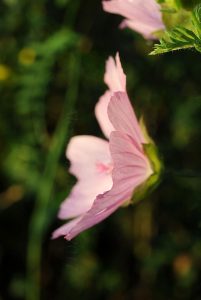 Flowers and other parts of nature make excellent subjects in photography. First of all, flowers don’t need payment as models, and they tend not be self-conscious in front of the camera. They are very patient as the photographer moves about, trying different views and different lenses and considering how to make the most of the light. And photos of nature are popular: they bring the outside indoors and enliven interiors. Much like a vase of flowers, photos of blossoms can brighten a room when hung on the wall. Perhaps you like to garden yourself and would like to share what you see, or remind yourself in winter of the beauty of the nature around you. Looking closely, we find fascinating structures which indicate the complexity of nature, or the wonder of the design underpinning beauty. All of these are reasons for trying out macro photography.
Flowers and other parts of nature make excellent subjects in photography. First of all, flowers don’t need payment as models, and they tend not be self-conscious in front of the camera. They are very patient as the photographer moves about, trying different views and different lenses and considering how to make the most of the light. And photos of nature are popular: they bring the outside indoors and enliven interiors. Much like a vase of flowers, photos of blossoms can brighten a room when hung on the wall. Perhaps you like to garden yourself and would like to share what you see, or remind yourself in winter of the beauty of the nature around you. Looking closely, we find fascinating structures which indicate the complexity of nature, or the wonder of the design underpinning beauty. All of these are reasons for trying out macro photography.
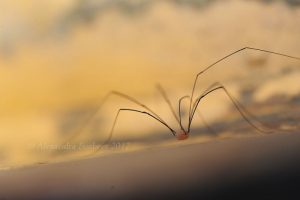
Harvestman shot with remote flash bounced off a reflector which was positioned below the harvestman, showing the space between the invertebrate’s body and the yellow machine.
Some people who consult me about improving their photography, sometimes wonder how to make their nature photos more interesting. I have put together a few tips here for you. This list is not meant to be exhaustive, as there are many ways to make interesting nature shots. Try everything you can think of, and develop your own style from your experiments.
Equipment
One can make close-up photos of nature with equipment such as macro lenses, or extension tubes which go between the camera and the lens, or magnifying filters which screw on to the front of the lens. As macro photographs technically are (at least) those in which the scene is represented 100% on the film or sensor, one does need some kind of special equipment. A description of options can be found elsewhere on the Internet. However, keep in mind that your equipments does not have to be expensive, especially at first. Extenstion tubes, for example, bring the focussing distance of your telephoto lens closer. Although it can be difficult to manage the focus, they are an inexpensive way to see what you can see and capture outdoors.
Photography is much more than the equipment used. Some essentials are more about the photographer: willingness to get low (gymnastic poses, or lying on the ground (rainwear can be helpful in the mud!)), and taking the time to experiement, for example. Here are five tips on composition and shooting:
Consider using classical compositions
Humans have certain preferences about what is attractive, is seems to be hard-wired into our brains. The advantage of this, is that a photographer can learn the rules of composition, and consider using some to enhance a particualr shot. So, for example, human tend to like images with diagonals, such as a cherry leaf above.
Be choosy about the time of day
Photography is about ‘drawing with light’, but this does not mean scribbling all over the page. Although we humans often enjoy being outside when the sun is at full power, and we tend to notice the bright flowers in the sunshine, it may not be the best time to capture shots of nature. Although we need light to make photographs, we also need shadows.
Consider going out early to capture the plant in the morning light. The low sun can be golden and gentle. Backlight – capturing a feature against a low source of light, like the rising sun, can be fabulous.
Backlight can also be created by using a spot of gentle remote flash – so get a flash with remote trigger or hotshoe cable, attach a diffuser, and get experiementing!
Or go out in the evening, or in the shade, to capture detail visible in the softness of indirect light.
Water
As you have probably heard, the human body is more than half water. Perhaps this is one reason that we tend to find water droplets and dew interesting components in nature photographs. In fact, I remember years ago reading a recommentation that one always bring a small spray bottle along, to add the water droplets if there are none. Fortunately, in northern Europe and much of the temperate zone, all you need to know is that getting up early to capture dew or rain drops – especially if you can find an interesting reflection in the water droplets – can be very worthwhile.
In summary, my recommendations for capturing interesting nature photographs are: having a willingness to crawl or squat to get interesting perspectives; taking the time to set up an interesting composition; considering how to add light from a remote flash or from a low-lying sun; and getting close to observe the amazing nature you might want to photograph and share. Have fun!
